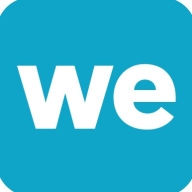

Find out what your peers are saying about Adobe, Liferay, Sprinklr and others in Digital Experience Platforms (DXP).
| Product | Market Share (%) |
|---|---|
| Magnolia CMS | 7.1% |
| Wedia Digital eXperience Management | 0.5% |
| Other | 92.4% |
Magnolia is one of the oldest and most popular digital experience platforms, delivering high-quality services for customers looking for established CMS solutions. Having started out as an open-source content management system, today Magnolia provides digital experience for some of the largest companies in the world. This DXP is Java-based and uses a JCR repository to store, search, and restore data. Organizations that employ IT specialists with expert Java knowledge can benefit from the services of Magnolia, but the company also provides education for beginners. Through the Magnolia education program, business owners who are inexperienced in Java or other technologies can learn the concepts of the CMS and use it to benefit the digital experience of their company.
The main industries that benefit from the services of Magnolia include retail and e-commerce, finance, travel, and media. According to Magnolia, companies from these industries benefit from increased revenues and improved customer service. Through the various services and features of Magnolia, an organization can build and establish a digital experience that can popularize the company online and expand the existing client list.
The features of Magnolia CMS allow you to create a personalized multi-channel digital experience while managing all content in one place. Magnolia divides its features into four main categories:
Magnolia CMS offers various benefits, including:
Wedia’s Digital eXperience Management (DXM) module is at the crossroad of content and consumer context: it allows clients to dynamically adapt master assets from a single source of truth library (SSOT), and distribute them onto various distribution channels.
Digital eXperience Management makes dynamic content available through API and ‘headless’ diffusion. The content is managed separately from the content presentation but interacts with the audience when it is diffused.
This separation allows creative teams to focus on building the core content without having to simultaneously worry about the presentation. Content is adapted on-demand in the desired format and at any requested moment, enabling a ‘create once and publish everywhere’ workflow.
The main goal of the DXM module is to deliver a great and personalized user experience. This is achieved through a dynamic rendering of content which generates multiple variants of assets. The variations can include the technical adaptation of content (device, format, resolution, SEO, rights management) to the user context (location, culture, season, weather, place …) and behavior (session duration, already seen content, previous navigation, user journey etc.).
In order to succesfully produce such digital experiences, both contextual and unified, the DXM integrates with several key building blocks of your information system. First of all, the DAM (Digital Asset Management), but also, Product Information Management (PIM), Customer Relationship Management (CRM), Content Management System (CMS), CDP (Customer Data Platform) or Marketing Automation and eCommerce solutions.
The DXM module also comes with the necessary data visualization tools to measure the marketing performance of your content and improve your marketing ROI.
We monitor all Digital Experience Platforms (DXP) reviews to prevent fraudulent reviews and keep review quality high. We do not post reviews by company employees or direct competitors. We validate each review for authenticity via cross-reference with LinkedIn, and personal follow-up with the reviewer when necessary.